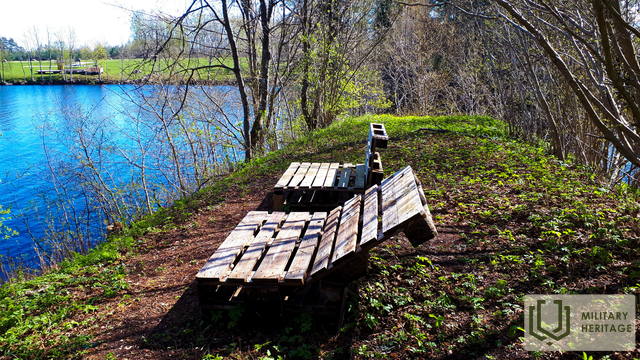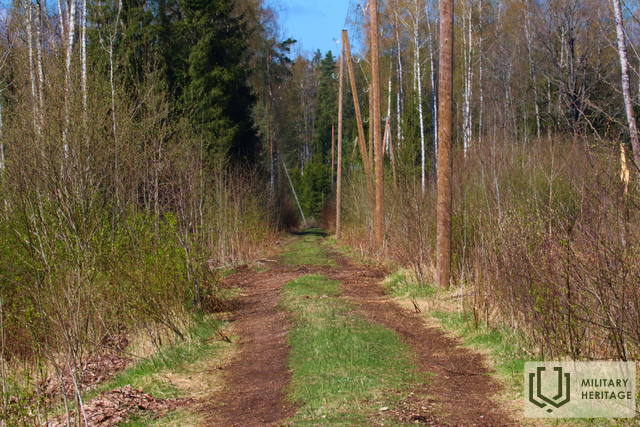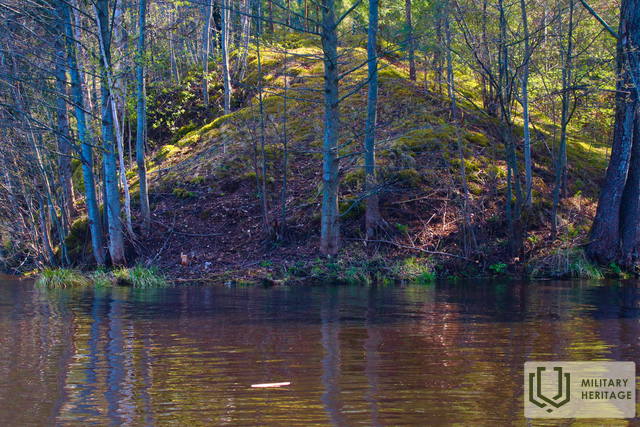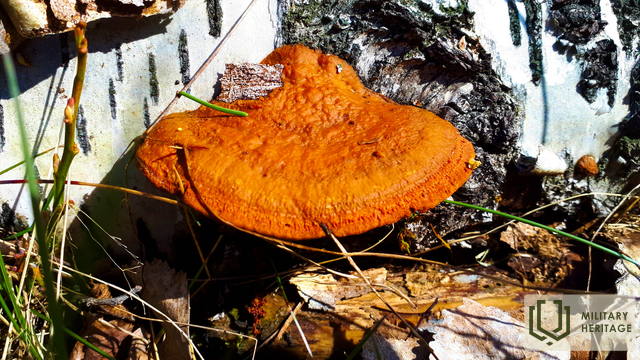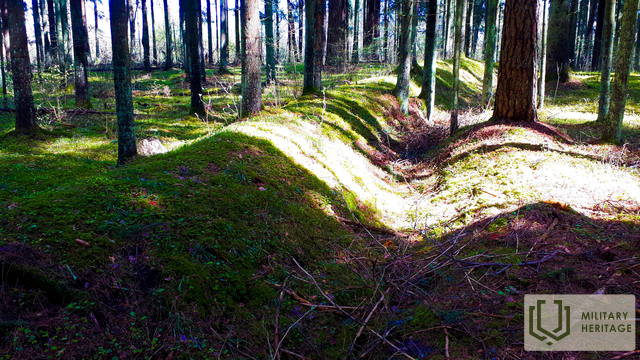Nega (Melderupe) and its surroundings Mūšio vieta

Nega is still called Melderupi on maps from the 1940s. Along with the construction of the Ķegum HPP, its last 2.6 km was flooded, creating a more than 100 m wide extension of the river. In order to ensure the construction of the Ķegum HPP with gravel, a quarry was built on the eastern bank of the Nega, and a railway bridge was built across the river. The gravel was transported along the 6 km long railway line to the new construction of the HPP with the help of a narrow-gauge railway. The first two kilometers of the railway site are visible both in nature and on LIDAR maps. Further on, the railway site coincides with the modern Jaunjelgava - Ķegum road (P85). On the west bank of the Negus, in the north, about 0.2 km north of the houses of the Bridge Guards (the owners have memories of the Second World War and related events in this place), there is a source - a popular water intake point. Active military activity took place in the vicinity of Nega in both 20th centuries. in world wars. If you look at LIDAR maps and nature, trench positions are visible north of the P85 road and along the banks of the river. To the south of the P85 road, a 0.8 km long ridge of dunes, the top and slopes of which are dotted with trenches, adjoins the flooded part of the Nega from the southwest. On the side of the small forest road that connects the P85 road with the houses of Liepdegumu, there is a standing dune, the rectangular pits on the slopes of which indicate that buildings or warehouses were located here. The mentioned dune is surrounded from the north and west by a strip of ditches about a kilometer long. Man-made negative landforms are also visible south of the P85 road. A dense network of trenches and buildings or/and warehouses (a network of pits of various sizes is in nature and can also be seen on LIDAR maps on the eastern bank of Nega between the P85 road and Širmeļupīti. 1.8 km east of Nega is the cemetery of the Lezmani brothers. You can go to them along the small forest road , which unfolds in the vicinity of ņegas and Širmeļupīte. The third line of trenches (farthest to the south) marked on the map of the National Library of Latvia ""Zusamendruck Riga, Gezeichet u.gedruckt vd Vermessungs"" is clearly visible on LIDAR maps and in nature even today - a century later.
Panaudoti šaltiniai ir literatūra:
1. Historical, LIDAR and other maps: https://vesture.dodies.lv/#m=15/56.71776/24.69606&l=O/KDW
2. Map collection of the National Library of Latvia, map "Zusamendruck Riga, Gezeichet u.gedruckt vd Vermessungs" - Abt.18., 1: 100,000"
3. Construction of Ķeguma HPP, https://energetikasmantojums.lv/interesanti-fakti-par-keguma-hes-celtniecibu/
Susijusi istorija
Negos upės tilto išgelbėjimas nuo susprogdinimo
Tuo metu, kai 1944 m. vokiečiai traukėsi, buvo susprogdinta daug svarbių objektų ir to išvengti buvo labai sunku, tačiau pasakojama ir apie stebuklingus nutikimus, kai vietos gyventojų drąsa ir kario tolerancija leido išsaugoti vietos gyventojams svarbias vietas, lašiša išliko gyva. Viena iš istorijų yra ši apie diskusiją tarp namų šeimininkės ir vokiečių kareivio, kuris išgelbėjo nuo susprogdinimo visą tiltą.
Gyvenimas Antrojo pasaulinio karo metais Kegumo pusėje
Prisiminimai apie dabar tolimą karališkąją epochą mirga. Vyresniajai kartai tai primintų jų pačių išgyvenimus, o jaunesnei kartai tai gali nuobodžiauti.




